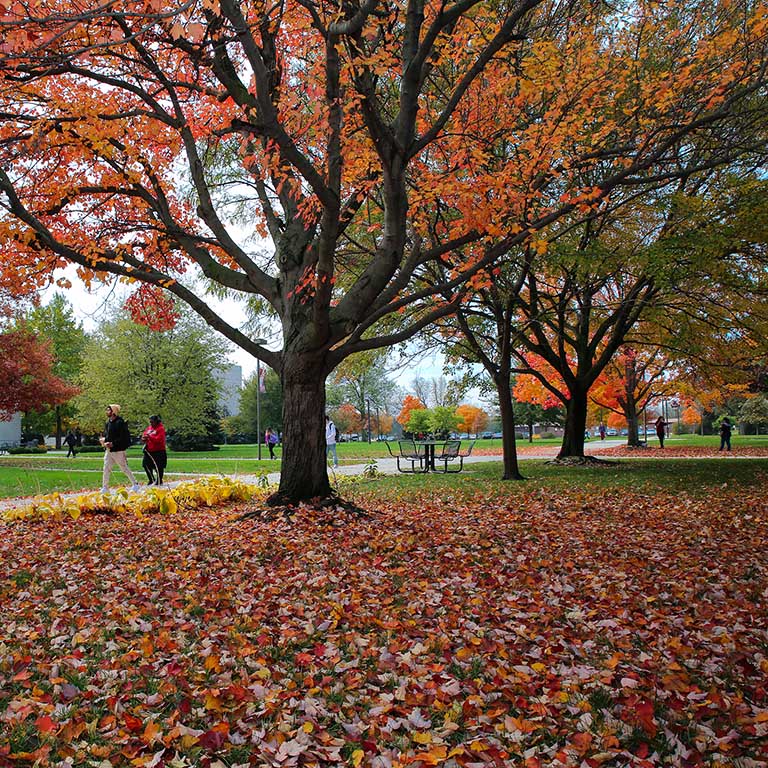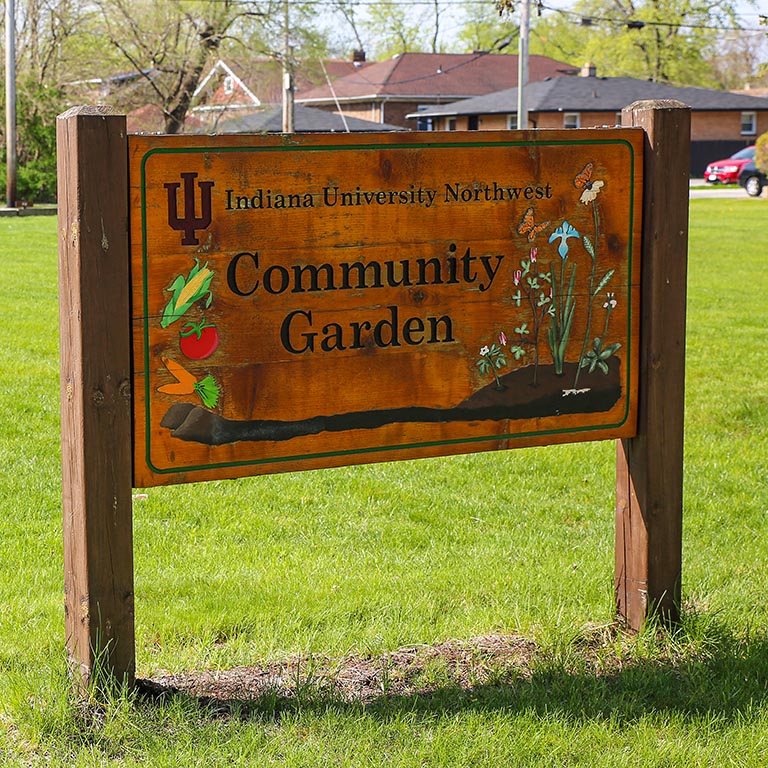Health and Wellness
Supporting physical and mental health is essential to creating a sustainable and resilient community. As an urban campus our IU Northwest and local communities face issues related to air quality, the urban heat island effect, drinking water and local water quality, food availability and nutrition, along with general issues of health and wellness.
IU Northwest contains numerous academic programs, research projects, and outreach opportunities dedicated to human health, environmental health, and natural ecosystems. For example, did you know that our IU Northwest School of Nursing is a committed partner to the Nurses Climate Challenge?
Efforts to improve the campus infrastructure and natural areas are also aimed at improving health and wellness. Trees provide essential ecosystem services related to health and well-being. Increasing the amount and condition of natural areas including trees, native vegetation, and wetlands provides supporting services like improving local air quality, controlling temperatures, and reduced flooding. It also provides the health benefits created when people interact with nature.





